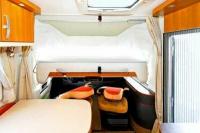Conduct an experiment in kindergarten
Experiments in kindergarten should be easy to carry out and of course not just fun for the children. Air is therefore a popular topic.
Experiments in kindergarten - always a bit tricky
- Experiments should "explain something about the world" to preschool children, be fun and of course arouse interest in scientific issues. So the little researcher in kindergarten is in demand.
- Therefore, the experiments must be manageable and easy to carry out with everyday objects. After all, the little researcher would like to show such an experiment at home.
- However, it is not easy to bring these points under one roof. Most of all, not all will children a kindergarten group can carry out the experiment themselves. Sometimes you can just assist.
- Experiments with air are particularly suitable. There is no limit to the amount of air available, but the following three experiments are still astonishing.
Experiment 1: Air is still there when something is "empty"
This experiment aims to stimulate what is meant by the term "empty".
Fire, water, air - research in the day care center
Experimenting, observing, gaining scientific knowledge: you can ...
- It is easy to check whether a bottle is really "empty".
- Turn a bottle (empty) over and submerge it with the opening facing down in a bowl or bowl of water.
- If you hold the bottle at a slight angle, bubbles will swell from the bottle to the surface of the water.
- So wasn't the bottle empty after all? Air is also a substance that can come out of an object and occupy a space (bottle, bubbles).
Experiment 2: Air can lift large weights
Air has no power because it is so light as a feather? The experiment proves the opposite:
- You put a large (not broken!) Plastic bag on a table.
- You put a heavy book or a thick bag on top of the bag so that the opening of the bag is still visible.
- Now roll the opening of the bag into the smallest possible hole and blow hard into it. Perhaps you will prepare several such experiments so that the children can test their breath as well.
- Does the book or the bag lift? This is how a bicycle tire and (simplified) a car lift work.
Experiment 3: Air can also be strong
In this third attempt for the kindergarten you can show that the ambient air can generate a lot of pressure, the (known) air pressure:
- First you attach the thicker cord to the board, similar to a package lacing. Leave a good piece of string that you can use to lift the board. Perhaps you can also make a practical loop.
- Now put the board on a table. It has to lie flat.
- Now cover the board extensively (and this is important) with newspaper pages. However, you do not need more than two layers, otherwise the overlay will be too rigid.
- At a small (really small!) Hole in the middle of the cover, lead the board cord out.
- Now smooth the newspaper well with your hands so that it lies flat. If it is still slightly attracted to the plastic surface of the table, so much the better. Virtually no air should be able to get under the newspaper.
- Now the exciting experiment begins: Can someone lift the board? Even if you or one of the children should manage to do this, the experiment impressively conveys that "we have a lot of air on us".


